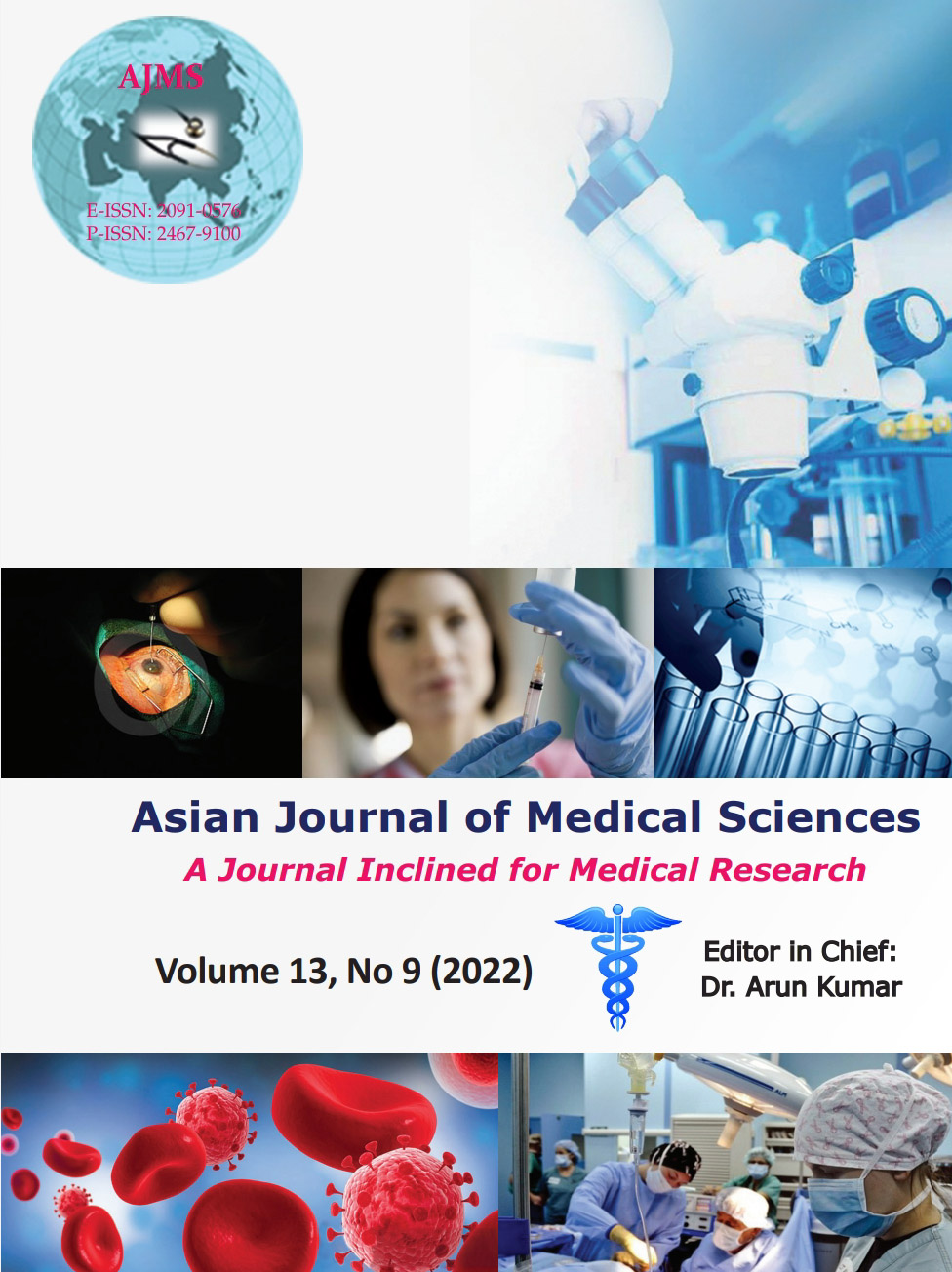Risk factors of mucormycosis in post-COVID-19 patients– A Retrospective study
Keywords:
Mucormycosis; Diabetes mellitus; Steroid; OxygenAbstract
Background: Rhino-orbito-cerebral mucormycosis was seen in increasing severity in the recent second wave of COVID-19 in India. The incidence of mucormycosis is increased significantly in patients with diabetes. The most common cause attributed to the rise of mucormycosis in COVID-19 patients are uncontrolled diabetes. Lymphopenia and increased levels of certain cytokines, such as IL-6, have been closely associated with the disease severity.
Aims and Objectives: The aims of this study were to analyze risk factors involved in Mucormycosis in 2nd wave of COVID-19.
Materials and Methods: The study was done in the Mucormycosis ward, Department of ENT, Patna Medical College and Hospital, Patna, between May 2021 and July 2021. A total of 100 patients of both gender and all age groups were taken into the study.
Results: Out of 100 patients included in the study, 57% (n=57) of patients had history of steroid intake, while 43% (n=43) had no history. About 41% (n=41) of patients needed oxygen support during treatment,while 59% (n=59) had no history of oxygen inhalation. About 88% (n=88) of patients had prior history of diabetes or detected during treatment, while 12% (n=12) had no prior history of diabetes or detected during treatment. About 91% (n=91)of patients had uncontrolled hyperglycemia, while 9% (n=9) had controlled blood sugar level.
Conclusion: Uncontrolled hyperglycemia and delta strain are mainly associated major risk factors that lead to such high number of mucormycosis cases in India (post 2nd wave of COVID-19). Steroid role is not that much significant in our study and oxygen inhalation is not associated with mucormycosis.
Downloads
Downloads
Published
How to Cite
Issue
Section
License
Copyright (c) 2022 Asian Journal of Medical Sciences

This work is licensed under a Creative Commons Attribution-NonCommercial 4.0 International License.
Authors who publish with this journal agree to the following terms:
- The journal holds copyright and publishes the work under a Creative Commons CC-BY-NC license that permits use, distribution and reprduction in any medium, provided the original work is properly cited and is not used for commercial purposes. The journal should be recognised as the original publisher of this work.
- Authors are able to enter into separate, additional contractual arrangements for the non-exclusive distribution of the journal's published version of the work (e.g., post it to an institutional repository or publish it in a book), with an acknowledgement of its initial publication in this journal.
- Authors are permitted and encouraged to post their work online (e.g., in institutional repositories or on their website) prior to and during the submission process, as it can lead to productive exchanges, as well as earlier and greater citation of published work (See The Effect of Open Access).




